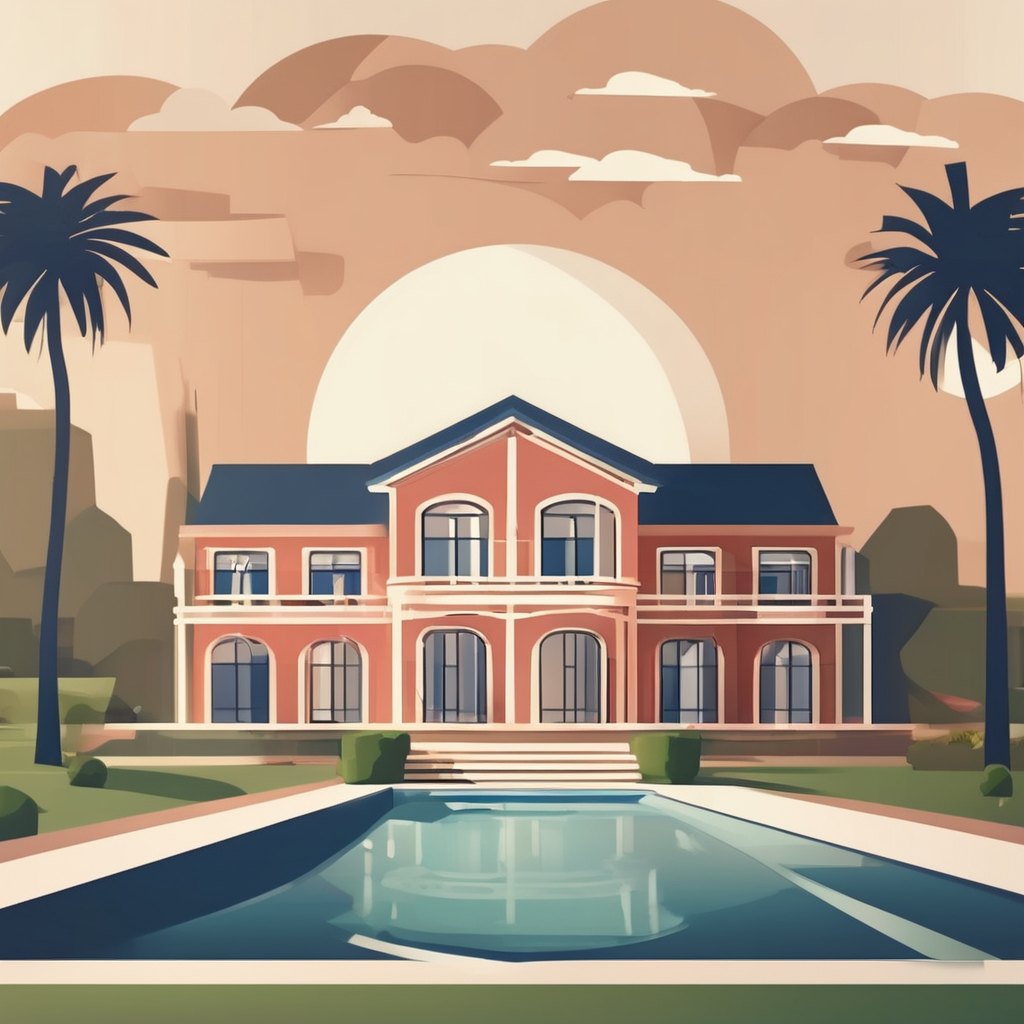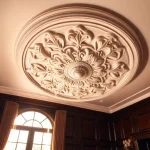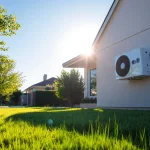Overview of Pool Coping Materials
Pool coping serves as an elegant finishing edge around pools, offering both functional and aesthetic enhancements. Choosing the right coping material is crucial, especially for regions like Britain where weather conditions can fluctuate significantly. This choice impacts both the pool’s durability and maintenance requirements.
Selecting weather-resistant materials ensures that pool coping can withstand the damp, cold British climate, minimizing deterioration and extending the pool’s lifespan. When discussing pool coping, understanding the variety of available materials is essential. Common options include stone, concrete, and ceramic, each offering unique benefits and considerations.
Also to read : Cost-effective pool heating solutions for uk homeowners: discover budget-friendly ways to keep your pool warm
Stone pool coping is known for its natural beauty and durability, perfect for those seeking a more traditional and elegant appearance. Concrete offers a cost-effective and highly customizable option, suitable for creative designs. Meanwhile, ceramic coping provides excellent slip resistance and a wide range of design choices, ensuring safety without compromising on style. Each material’s suitability will vary based on individual preferences, budget, and the specific conditions of the local environment.
Stone Pool Coping
Stone pool coping is a popular choice for those seeking a blend of natural beauty and functionality. Known for its aesthetic appeal, stone coping can significantly enhance the visual allure of any pool area. Among the various types of stone used, natural stone like granite, limestone, and slate are common due to their renowned durability.
Have you seen this : Optimizing pool warmth: innovative insulation strategies for uk homeowners
Characteristics and Benefits
Each type of natural stone offers distinct benefits. Granite, for example, is exceptionally durable and resistant to weathering, making it suitable for the British climate. It is also resistant to scratching, which helps maintain its appearance over time. Limestone, on the other hand, provides a softer look and is often chosen for its muted, earthy tones that blend seamlessly with outdoor settings. Slate is appreciated for its unique textures and rich colors, adding a touch of elegance to pool surroundings.
Weather Resistance Comparison
When assessing weather resistance, granite leads due to its resilience against cold and wet conditions. Limestone, while less dense, can still withstand the British climate if properly sealed. Slate, though beautiful, may require more attention as it can be susceptible to moisture ingress, which could lead to flaking over time.
Maintenance Tips
To preserve the integrity of stone coping, regular maintenance is key. Sealing the stone periodically can prevent water absorption and damage. Additionally, cleaning with mild, pH-balanced solutions will help maintain its natural shine and prevent fading. Avoid using harsh chemicals or pressure washers as these can damage the stone surface. By following these steps, stone coping can remain a stunning and long-lasting feature of your pool area.
Concrete Pool Coping
Concrete coping offers an attractive blend of durability and versatility, making it an appealing choice for poolside finishes. Unlike stone, concrete coping is renowned for its cost-effectiveness and exceptional customization options. This flexibility allows homeowners to tailor their pool’s appearance to personal preferences, whether seeking a modern look or something more traditional.
Types of Concrete Coping
Concrete coping commonly comes in two forms: precast and poured concrete. Precast concrete is crafted into molds before installation, offering precise shapes and designs perfect for replicating intricate patterns. On the other hand, poured concrete is installed directly onsite, providing a seamless, customizable finish ideal for unique pool designs. Decorative options, like stamped or stained concrete, can further enhance the pool’s aesthetics, mimicking the look of stone or tile while maintaining concrete’s practicality.
Weather Resistance
When it comes to weather resistance, concrete excels in the face of Britain’s unpredictable climate. Its innate ability to withstand wet and cold conditions makes it a reliable choice. By ensuring proper installation and using high-quality weather-resistant materials, concrete’s performance is enhanced, reducing the risk of cracks or weather-induced damage over time.
Installation and Maintenance
The installation of concrete coping should be handled with precision, particularly when pouring concrete to achieve a smooth, level surface. It’s essential to choose the right sealers to add a layer of protection against moisture intrusion. Regular maintenance, such as inspecting for cracks and resealing every couple of years, helps maintain the coping’s integrity. Thus, homeowners can enjoy both the durability and customizable beauty of concrete coping with regular care.
Ceramic Pool Coping
Ceramic pool coping is a popular choice for pool owners seeking both style and practicality. Known for its design variety, ceramic coping offers a wide array of colours, patterns, and textures, allowing for customization that can suit any pool aesthetic. Its slip-resistant options make it particularly suitable for safety-conscious users, especially in areas where the poolside might frequently be wet. Ceramic coping is also valued for its ability to endure harsh weather conditions, an essential consideration for withstanding Britain’s damp and cold climate.
Advantages of Ceramic Tiles in Pool Environments
Ceramic tiles are favoured for their blend of beauty and resilience. One major advantage is their slip-resistant surfaces, which reduce the risk of accidents in wet areas, making them a safe choice around swimming pools. Additionally, ceramic’s resistance to fading and wear means it retains its appearance over time, even under constant exposure to sun and moisture. The material’s versatility allows it to complement diverse poolside landscapes, adding both elegance and functionality.
Care and Maintenance for Longevity in Harsh Weather
To maintain the integrity of ceramic pool coping, regular care is necessary. Routine cleaning with gentle, non-abrasive solutions prevents the build-up of residues that can detract from the tiles’ natural sheen. It is also important to inspect for cracks or damage and address any issues promptly to avoid further deterioration. For enhanced durability, weatherproofing treatments can be applied, helping the tiles remain beautiful and functional despite the challenging British climate. With proper maintenance, ceramic coping can be a long-lasting and stylish addition to any pool area.
Comparison of Pool Coping Materials
When it comes to pool coping, choosing the right material can significantly influence both the visual appeal and durability of your pool. Given the diverse range of materials available, comparing their strengths and weaknesses is crucial to ensure longevity and appeal, especially under Britain’s unpredictable weather conditions.
Material Pros and Cons
Each type of coping material brings its unique advantages and challenges. Stone coping, for instance, enhances your pool area with its natural aesthetic appeal and robust durability, albeit often at a higher cost. Its resistance to weathering, particularly in the case of granite, makes it a reliable option. However, stone requires regular maintenance, such as sealing, to prevent moisture-related issues.
On the other hand, concrete coping is celebrated for its cost-effectiveness and extensive customization options. Its performance in wet and cold climates is commendable, making it a practical choice for British weather. Yet, care must be taken to avoid cracks, necessitating correct installation and periodic sealing.
Ceramic coping stands out with its rich variety of designs and slip-resistant properties, providing both safety and style. Its resistance to fading makes it a durable option, but it may require frequent cleaning to maintain its luster.
Climate Adaptability
Adaptability to local climate is also a crucial consideration in material selection. Stone, particularly granite, copes well with the British climate, while limestone and slate may require more attention. Concrete’s resilience in the face of cold and moisture makes it a versatile choice. Ceramic, with its resistance to rain and cold, also suits Britain’s damp conditions.
Recommendations
In choosing the best material, consider your aesthetic preferences, budget, and maintenance capacity. For a classic and elegant style with minimal maintenance over the years, granite might be the ideal choice. If you prefer customizable designs and a lower initial investment, concrete is the practical option. Meanwhile, for those prioritizing safety and design versatility, ceramic offers a balanced solution.
Installation Tips for Pool Coping
Installing pool coping effectively is key to ensuring a durable and attractive finish for your pool area. Here’s a guide to make the process seamless:
Step-by-Step Installation Process
-
Preparation: Begin by preparing the pool edge. Ensure it is clean and even to provide a solid base for the coping.
-
Choosing Materials: Select weather-resistant materials suitable for British climates, such as quality stone, concrete, or ceramic coping.
-
Setting the Base: Lay a mortar bed or adhesive, ensuring it is evenly spread to avoid uneven surfaces. For concrete coping, a custom mold may be needed if you’re creating unique shapes.
-
Placing the Coping: Carefully position the coping pieces. Whether you’re using precast concrete or stone, ensure each one is properly aligned and spaced. Use spacers if necessary to maintain uniform gaps.
-
Securing: Apply consistent pressure to ensure the coping adheres properly to the base.
-
Sealing: Finish with a suitable sealer to enhance water resistance and longevity, imperative for the British weather conditions.
Tools and Materials Required
- Level
- Trowel
- Rubber mallet
- Weather-resistant mortar or adhesive
- Sealer
- Measuring tape
Common Pitfalls to Avoid
- Uneven Base: An uneven pool edge can lead to misaligned coping, affecting both aesthetics and function.
- Incorrect Adhesive: Use an adhesive that withstands moisture for longer-lasting coping.
- Insufficient Sealing: Failing to seal effectively can lead to water infiltration and damage, especially relevant in damp climates.
By following these steps, alongside expert advice, homeowners can achieve a professional finish and significantly enhance their pool’s durability.
Care and Maintenance of Pool Coping
Maintaining pool coping involves adopting weatherproofing techniques and implementing regular care routines to ensure durability across all seasons. To effectively preserve the appearance and structural integrity of stone, concrete, and ceramic coping, specific maintenance steps should be followed based on the materials’ unique properties.
Regular Maintenance Routines
Concrete coping benefits from periodic inspection for cracks and chips. Applying a high-quality sealer can protect it from moisture ingress and prevent deterioration. Regular sealing every two to three years is recommended to maintain its characteristic strength and appearance.
Stone coping, particularly types like granite and limestone, requires thorough cleaning with pH-balanced solutions. These maintain the stone’s natural appearance without causing harm. Additionally, sealing stone surfaces periodically protects against Britain’s damp climate, ensuring water does not cause undue damage or discolouration.
Ceramic coping also enjoys longevity with minimal abrasion-resistant cleaning agents to prevent residue buildup and preserve its vibrant designs. Frequent assessments for signs of damage, such as cracks, ensure timely repairs before significant wear occurs.
Weatherproofing Techniques
Effective weatherproofing can greatly extend the lifespan of pool coping materials. For concrete and stone, applying suitable sealers strengthens resistance to moist conditions prevalent in Britain. This practice is crucial during seasonal transitions, where moisture and temperature fluctuations pose a risk.
Ceramic tiles can be safeguarded by applying weatherproofing treatments, offering an additional layer of protection to withstand frost and rain. Ensuring these treatments are compatible with the coping material is key in fortifying its defence against adverse conditions.
Seasonal Tips for Preparing for Winter
Preparing pool coping for winter involves strategic upkeep routines. Use protective covers to shield coping from prolonged exposure to ice and snow. For stone, especially limestone, ensure all surfaces are dry and appropriately sealed before frost to prevent cracking.
Clear debris promptly from ceramic and concrete surfaces to reduce moisture retention, which can potentially cause damage. Regularly monitoring weather conditions and adjusting maintenance practices accordingly will help pool owners preserve the functionality and beauty of their coping throughout the harsh winter months.
Visual Examples and Case Studies
Exploring diverse pool coping examples can provide rich design inspiration and a showcase of successful installations. Seeing these real-world applications helps visualize how various materials can enhance a pool’s aesthetic while ensuring durability and functionality.
Real-World Installations
Illustrations of stone coping in outdoor settings highlight its ability to seamlessly blend natural charm with durability. Many modern pools use granite for its aesthetic appeal and resilience against British weather. Limestone, with its softer tones, creates an inviting ambiance in garden pools, while slate offers striking textures that add elegance to luxury pool setups.
In contrast, concrete coping installations often depict creative designs with stamped or stained finishes, reflecting homeowners’ personal styles. This customization capability, along with its affordability, makes it a popular choice. Precast concrete patterns can replicate both rustic and sleek contemporary themes effectively.
Ceramic tiles come to life in vibrant displays, where slip-resistant surfaces are paramount. These installations demonstrate how ceramic can effortlessly blend safety with style, offering an array of colors and patterns to fit any architectural environment. High-traffic pool areas particularly benefit from ceramic coping’s minimal maintenance demands.
Design Inspiration and Functionality
Considering the practicality of these materials under different conditions emphasizes the need for tailored solutions. Whether enhanced visual appeal, safety, or cost-effective designs, each material offers distinct advantages. Integrating colourful ceramic tiles against a bright landscape may inspire bold design themes, while the timeless beauty of stone can cater to those desiring a blend of nature and structure.
These examples encourage one to dream big with their poolside design, offering diverse avenues to create stunning outdoor spaces that are both visually appealing and robust enough to withstand climatic challenges. Properly executed, pool coping not only serves its functional role but also elevates the overall ambiance of a home oasis.
Expert Insights and Recommendations
When embarking on a pool coping project, consulting pool coping experts is invaluable to achieve outstanding results. These professionals often highlight the significance of choosing materials suited to Britain’s unique climatic conditions. Landscape architects frequently recommend weather-resistant materials like granite and concrete for their durability and weather adaptability. This ensures longevity, even amidst Britain’s notorious rain and cold.
Quotes and Advice from Experts
Industry practitioners advise focusing on both form and function when designing pool areas. According to seasoned pool installers, “Durability shouldn’t compromise aesthetic value,” emphasizing the availability of cost-effective options that offer customization without losing elegance. The choice between stone, concrete, and ceramic often depends on project-specific goals and the client’s personal preference. Opting for designs that enhance both safety and visual appeal remains a key meta-trend.
Latest Trends in Pool Coping Materials
Current trends veer towards integrating sustainable practices with traditional materials. Experts suggest using natural stone durability in creative ways, like offset patterns in limestone, to add visual interest while maintaining strength. Moreover, advances in slip-resistant options in ceramics allow for safer environments without detracting from the style quotient. The incorporation of decorative concrete finishes showing nine different textures is now in vogue, offering versatility like never before.
Regional Considerations for Material Selection
For those seeking advice pertinent to the British climate, granite and well-sealed concrete emerge as popular choices due to their weather resistance. It’s crucial to consider the pool’s surrounding landscape, where incorporating local flora can blend the pool seamlessly into the garden. This approach resonates with eco-friendly designs prioritizing environmental harmony while ensuring the pool area remains robust against weather elements.









